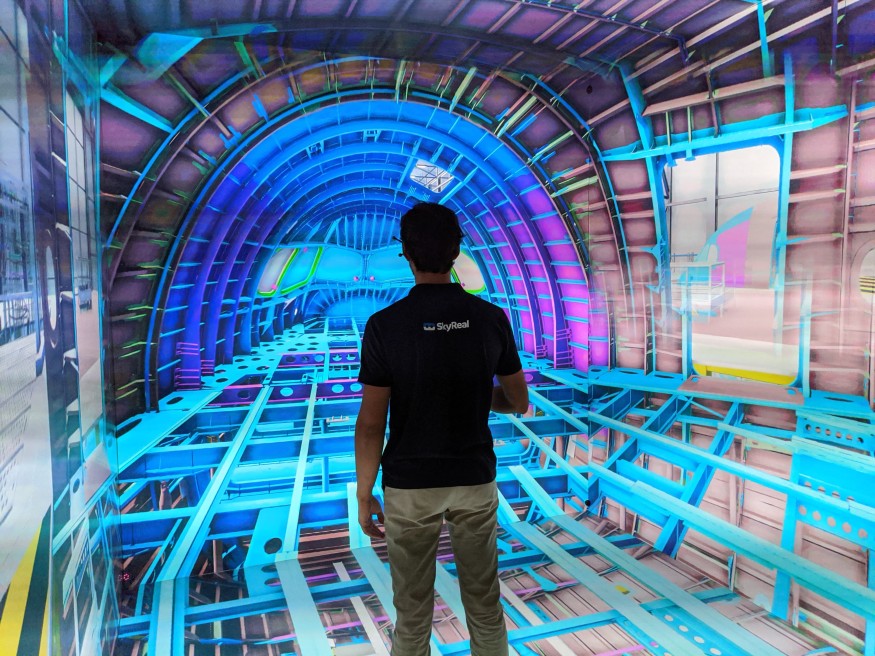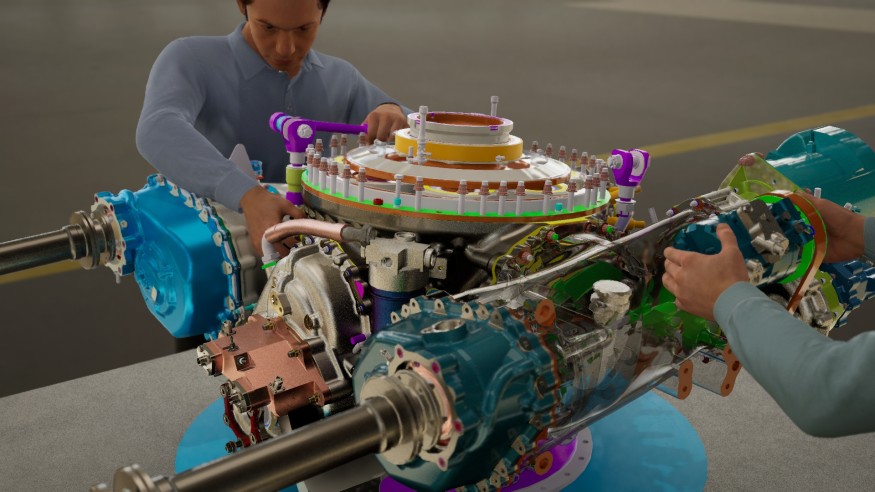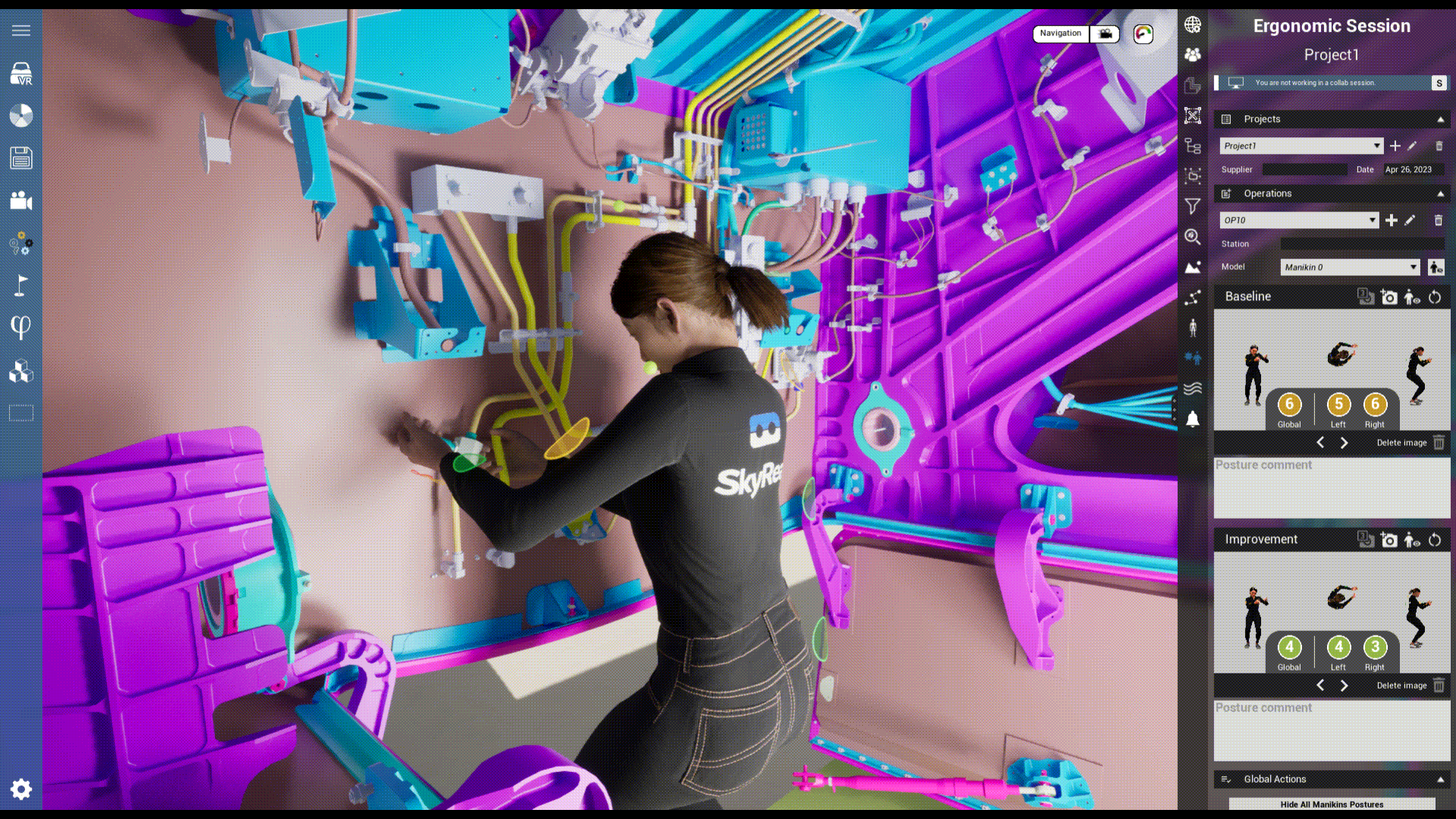Edit (2021, November the 10th) :
As this article was originally published in 2018, some estimates of the benefits brought by virtual reality have been refined over the last 3 years on our clients’ projects. We therefore deliver here the quantified estimates of added value and return on investment made with our clients from the industrial sector that we have classified according to 3 inputs: engineers, decision makers and stakeholders (colleagues, customers, partners).
For engineers:
- Using virtual reality softwares increases design error detection by 90%
- The design cycle can be completed up to 3 times faster
- Travel costs have been reduced by up to 70% on some projects
Obviously, the use of a scale 1 prototype is particularly interesting for the development of a product; it is also an excellent support to keep a schedule and follow the progress of a project.
For decision makers:
- 30% faster time to market for an innovative product
- An 80% reduction in the budget dedicated to prototyping
- A 40% reduction in production line downtime for testing or implementing an innovation
Efficient project reviews and considerable risk reduction before the production phase.
For other stakeholders (operators, sales, …):
- Efficient and repeatable trainings with very low costs; we observe a strong acceleration (x4) of learning
- Convincing pre-sales; 30% more projects won with the use of virtual reality models
- 60% reduction of injuries in production thanks in particular to the attention paid to MSDs issues during the design phase
Above all, the use of SkyReal allows all stakeholders of an industrial project to collaborate on a virtual model.
———————————————————————
Although virtual reality technologies are being experimented in several professional sectors and their full integration only exists with a few companies, they have already been sufficiently used and proven to be able to draw teachings from them. This helps to identify the first direct benefits of VR in the workplace.
By transposing these experiences from areas where the use of VR has been conclusive, it would also be possible to predict what the benefits of VR could be in another sector, even before experiencing it in real conditions.
More anticipation for the realization of a project carried out with the help of the VR
Concretely, virtual reality will allow more anticipation. That is to say, a vision and an understanding of a much more precise project even before its launch.
Predicting delays, costs, workforce adjustments, constraints or incidents becomes easier with VR. The accessibility of a project, ergonomics, exchanges between different teams and logistics around the project will benefit from the implementation of VR in many aspects. In other words, the VR will overcome the expertise a bit (or not) developed by the company.
As part of the training, the contribution of VR goes directly toward a syllabus aimed at training operators as best as possible in order to make full use of their knowledge and new skills for the success of a project. The benefit of VR in training is rather obvious, to better train participants, more quickly and perhaps in greater numbers over the same timeframe.
Sharing an experience in a VR environment with collaborators also saves time by quickly linking teams around a project.
In this type of situation of VR collaboration, virtual reality equipment and associated software will save considerable time in terms of data loading and virtualized work environment. For example, it is now possible to load a complete aircraft model in a few minutes, or even seconds, instead of a few hours with traditional computer-aided design (CAD) systems.
As another proof the benefits of VR, the complete data on aircraft CATIA (Design Assisted 3D Interactive Applied), software created by Dassault Aviation, can be loaded in 10 seconds ! And it can be deployed in minutes, anywhere, without connection, offering a wide range of design, manufacturing and training capabilities.
Economic benefits of Virtual Reality
The savings associated with VR can be of many kinds. In December 2013 at the Guiana Space Center in Kourou, a problem was detected on the GAIA satellite when preparing for its launch. The resolution of this problem required a manual repair that had to be defined by a team of engineers based in Toulouse.
Thanks to VR, in Toulouse the engineers validated remotely the feasibility of the repair and worked a sequence of technical manipulations prepared in a virtual environment. Once refined and then tested, this sequence was sent to operators based in Kourou as a set of instructions to follow. Kourou thus had all the information needed to intervene to make the launch operational.
In view of the stakes and the investments specific to a space project of this type, the operation allowed to save a considerable time and thus to limit the financial impact related to the problem.
On a development cycle in engineering for instance, the use of VR saves precious time which for example, will leave room for the exploration of new ideas for engineers. He will be able to test and innovate more during the same production cycle, for an equivalent project completion time.
Thus, VR offers the possibility to an engineer to check the ergonomics and the accessibility of a product during the design phase, by a faster and more qualitative realization. It is estimated that up to 70% of the time saved on an engineering cycle is through the use of virtual reality technology.
Often, a project may require the realization of a prototype or a model, whether in the automobile, urban planning or design. With virtual reality, we can overcome the realization of mock-up as appropriate and avoid investment in expensive materials needed for its realization as wood, carbon or certain types of plastics and metals.
The benefits of VR in the aeronautics and automotive sector
The use of virtual reality at Airbus, for example, aims to provide airlines and their workers with complete 3D models of aircraft in production before moving on to the assembly phase. VR enables the integration of digital mockups in a production environments, including through loading and quick access to plans and information, the decision making of airlines will be much faster.
Companies can therefore project and anticipate more flight operations, planning the maintenance of a fleet of aircraft and use assistance through VR trainings for their operators. The benefit of the VR on the manufacturing stages comes from the simulation faculty of the assembly processes of cabin, reactor or cockpit of apparatus, the verification of the global accessibility of the equipment, as well as its ergonomics .
All of this leads to reduced design cycles, better rationalized costs and the increase in the quality of observable achievement, a real benefits of VR.
Another example of the benefit of augmented reality, a comparable technology, is Boeing. Its use by technicians has increased productivity by 40% and reduced production time by 25%.
Ford uses VR to capture human movements during the automotive equipment assembly to rethink employees key movements to reduce risk of injury and increase productivity. The benefit observed was a 70% reduction in employee injuries and a 90% reduction in ergonomic issues.
Ford faces the issue of geographical distance. The VR will bring together two individuals despite a significant distance between them, to perform the virtual tour of a new vehicle with the engineer team, thus avoiding significant travel expenses.
BMW engineers and designers use VR to test the appearance of various components of a car when they are assembled without prototyping, greatly reducing the cost of the engineering process.






